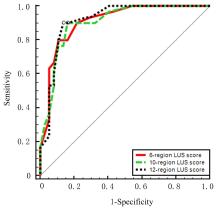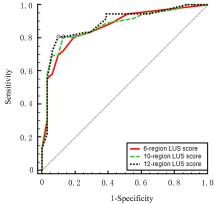| 1 |
ANADKAT J S, KUZNIEWICZ M W, CHAUDHARI B P, et al. Increased risk for respiratory distress among white, male, late preterm and term infants[J]. J Perinatol, 2012, 32(10): 780-785.
|
| 2 |
SHAPIRO-MENDOZA C K, LACKRITZ E M. Epidemiology of late and moderate preterm birth[J]. Semin Fetal Neonatal Med, 2012, 17(3): 120-125.
|
| 3 |
LABOR C O S, HIBBARD J U, WILKINS I, et al. Respiratory morbidity in late preterm births[J]. JAMA, 2010, 304(4): 419-425.
|
| 4 |
RAMACHANDRAPPA A, ROSENBERG E S, WAGONER S, et al. Morbidity and mortality in late preterm infants with severe hypoxic respiratory failure on extra-corporeal membrane oxygenation[J]. J Pediatr, 2011, 159(2): 192-198.e3.
|
| 5 |
MAHONEY A D, JAIN L. Respiratory disorders in moderately preterm, late preterm, and early term infants[J]. Clin Perinatol, 2013, 40(4): 665-678.
|
| 6 |
LIU J, COPETTI R, SORANTIN E, et al. Protocol and guidelines for point-of-care lung ultrasound in diagnosing neonatal pulmonary diseases based on international expert consensus[J].J Vis Exp, 2019(145).DOI:10.3971/58990 .
doi: 10.3971/58990
|
| 7 |
SINGH Y, TISSOT C, FRAGA M V, et al. International evidence-based guidelines on Point of Care Ultrasound (POCUS) for critically ill neonates and children issued by the POCUS Working Group of the European Society of Paediatric and Neonatal Intensive Care (ESPNIC)[J]. Crit Care, 2020, 24(1): 65.
|
| 8 |
RAIMONDI F, MIGLIARO F, SODANO A, et al. Use of neonatal chest ultrasound to predict noninvasive ventilation failure[J]. Pediatrics, 2014, 134(4):e1089-e1094.
|
| 9 |
PANG H Q, ZHANG B, SHI J, et al. Diagnostic value of lung ultrasound in evaluating the severity of neonatal respiratory distress syndrome[J]. Eur J Radiol, 2019, 116: 186-191.
|
| 10 |
SZYMAŃSKI P, KRUCZEK P, HOŻEJOWSKI R, et al. Modified lung ultrasound score predicts ventilation requirements in neonatal respiratory distress syndrome[J]. BMC Pediatr, 2021, 21(1): 17.
|
| 11 |
VARDAR G, KARADAG N, KARATEKIN G. The role of lung ultrasound as an early diagnostic tool for need of surfactant therapy in preterm infants with respiratory distress syndrome[J]. Am J Perinatol, 2021, 38(14): 1547-1556.
|
| 12 |
RODRIGUEZ-FANJUL J, JORDAN I, BALAGUER M,et al. Early surfactant replacement guided by lung ultrasound in preterm newborns with RDS: the ULTRASURF randomised controlled trial[J]. Eur J Pediatr, 2020, 179(12): 1913-1920.
|
| 13 |
PERRI A, RICCARDI R, IANNOTTA R, et al. Lung ultrasonography score versus chest X-ray score to predict surfactant administration in newborns with respiratory distress syndrome[J]. Pediatr Pulmonol, 2018, 53(9): 1231-1236.
|
| 14 |
BRAT R, YOUSEF N, KLIFA R, et al. Lung ultrasonography score to evaluate oxygenation and surfactant need in neonates treated with continuous positive airway pressure[J]. JAMA Pediatr, 2015, 169(8): e151797.
|
| 15 |
DE MARTINO L, YOUSEF N, BEN-AMMAR R,et al.Lung ultrasound score predicts surfactant need in extremely preterm neonates[J].Pediatrics,2018,142(3): e20180463.
|
| 16 |
SWEET D G, CARNIELLI V, GREISEN G, et al. European consensus guidelines on the management of respiratory distress syndrome-2019 update[J]. Neonatology, 2019, 115(4): 432-450.
|
| 17 |
RAIMONDI F, MIGLIARO F, CORSINI I, et al. Neonatal lung ultrasound and surfactant administration: a pragmatic, multicenter study[J]. Chest,2021,160(6): 2178-2186.
|
| 18 |
ALDECOA-BILBAO V, BALCELLS-ESPONERA C, HERRANZ BARBERO A, et al. Lung ultrasound for early surfactant treatment: development and validation of a predictive model[J]. Pediatr Pulmonol, 2021, 56(2): 433-441.
|
| 19 |
BADURDEEN S, KAMLIN C O F, ROGERSON S R,et al. Lung ultrasound during newborn resuscitation predicts the need for surfactant therapy in very- and extremely preterm infants[J]. Resuscitation, 2021, 162: 227-235.
|
| 20 |
KAYKI G, YIGIT S, TANDIRCIOGLU U A, et al. Lung ultrasound (LUS) and surfactant treatment: looking for the best predictive moment[J]. J Perinatol, 2021, 41(7): 1669-1674.
|
| 21 |
ALKAN S, OZER E A, ILHAN O, et al. Surfactant treatment for neonatal respiratory disorders other than respiratory distress syndrome[J]. J Matern Fetal Neonatal Med, 2015, 28(2): 131-133.
|
| 22 |
MACHADO L U, FIORI H H, BALDISSEROTTO M,et al. Surfactant deficiency in transient tachypnea of the newborn[J]. J Pediatr, 2011, 159(5): 750-754.
|
| 23 |
ZHANG L H, FENG J N, JIN D, et al. Lung ultrasound score as a predictor of ventilator use in preterm infants with dyspnea within 24h after dhospitalization[J]. Pediatr Neonatol, 2023, 64(4): 420-427.
|
| 24 |
LOUIS D, BELEN K, FAROOQUI M, et al. Prone versus supine position for lung ultrasound in neonates with respiratory distress[J].Am J Perinatol,2021,38(2): 176-181.
|
| 25 |
GUO B B, WANG K K, XIE L, et al. Comprehensive quantitative assessment of lung liquid clearance by lung ultrasound score in neonates with No lung disease during the first 24 hours[J]. Biomed Res Int, 2020, 2020: 6598348.
|
| 26 |
ELSAYED Y N, HINTON M, GRAHAM R, et al. Lung ultrasound predicts histological lung injury in a neonatal model of acute respiratory distress syndrome[J]. Pediatr Pulmonol, 2020, 55(11):2913-2923.
|
| 27 |
DEMI L, VAN HOEVE W, VAN SLOUN R J G,et al. Determination of a potential quantitative measure of the state of the lung using lung ultrasound spectroscopy[J]. Sci Rep, 2017, 7(1): 12746.
|
| 28 |
LIU J, GUO G, KUREPA D, et al. Specification and guideline for technical aspects and scanning parameter settings of neonatal lung ultrasound examination[J]. J Matern Fetal Neonatal Med, 2022, 35(5): 1003-1016.
|
 ),Lin ZHANG,Hui WU(
),Lin ZHANG,Hui WU( )
)




